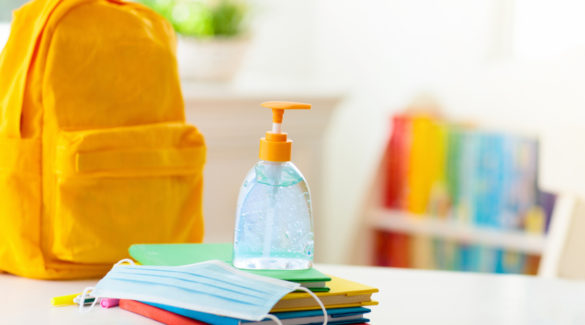Since Gov. Gavin Newsom’s July 17 edict closing all but a handful of schools in California, much has transpired.
First, it was uncovered a few days later that schools in the Golden State could apply for a waiver to reopen, something Newsom mysteriously omitted in his July announcement. But the waiver will not be granted easily. It must be requested by the district superintendent “in consultation with labor, parent and community organizations.” Then local health officers “must review local community epidemiological data, consider other public health interventions, and consult with CDPH when considering a waiver request.”
In other words, you may as well check your astrological chart for specific guidance. The labor aspect is particularly foreboding because the teacher union elites are adamantly against opening at this point, unless of course an obscene amount of federal dollars is thrown into the mix.
To ensure teachers’ support for this position, the unions are doing their best to scare them. For example, the National Education Association posted a piece last week suggesting that, in Florida, where Gov. Ron DeSantis has ordered schools to reopen for in-person learning, educators should write living wills and make sure they have life insurance.
Should educators be given a pass? Other “essential” workers are expected to continue to provide service during this trying time. Cops, sanitation workers and firemen don’t get to “shelter in place.” Why should teachers? When teachers go to a supermarket, they expect to get service. They wouldn’t like it one bit if the guy who stocks the produce shelves decided he was too scared to come to work.
The hypocrisy here is palpable. Unless, of course, the NEA doesn’t see teachers as “essential.”
A typical teacher union tactic is pointing to “science” as the reason to keep schools closed. But the Centers for Disease Control and Prevention (CDC) last week became the latest in a series of health organizations to advocate a return to in-person teaching. As reported by CNN, the new CDC guidelines on education and child care “come down hard in favor of opening schools, saying children don’t suffer much from coronavirus, are less likely than adults to spread it and suffer from being out of school.”
CDC director Robert Redfield said he would “absolutely send his grandchildren back to school.” Also, the American Academy of Pediatrics, having weighed the pros and cons, maintains that schools should reopen for in-person learning for children’s overall well-being. A new report by the National Academies of Sciences, Engineering, and Medicine echoes similar sentiments.
So what do the unions have to say about “science” now? In response to the new CDC guidance, all American Federation of Teachers president Randi Weingarten could come up with was that the “CDC may have changed its tone to accommodate President Trump’s whims….”
Oh, well. When you see that the science isn’t working out for you, change the subject by invoking the nuclear option: “Trump!” That is supposed to end the conversation. (That is sorta like when I was six and losing an argument with a friend, I would call him a “doodyhead.” Debate over.)
The dispute between science and union interests has resulted in several lawsuits being filed. The Florida Education Association, an NEA affiliate, is challenging Gov. DeSantis’ order to open the state’s schools. But in California, litigation is going in the other direction. Following Newsom’s closure of California’s schools, attorney Harmeet Dhillon’s Center for American Liberty announced the filing of a lawsuit challenging his shutdown mandate, stating that it would leave “the overwhelming majority of students without genuine access to an education.” As the California Policy Center’s Ceci Iglesias points out in an Orange County Register op-ed, the forced school closures will have a particularly devastating effect on low-income and minority families.
In late July, the concept of home-based “pandemic pods,” in which parents team up with other families in their neighborhoods to teach their kids, went viral. Some families are hiring teachers to help with the learning. Kerry McDonald writes that as the demand for educational alternatives mounts, entrepreneurial educators are helping to create more options for families. “In Maryland, longtime educators Steven Eno and Ned Courtemanche created Impact Connections, a microschool enabler connecting educators and parents and providing learning support.” Additionally, Facebook has become a hub of activity for parents who want to “pod up.”
But what about parents who can’t afford to hire a teacher for their pod? In late July, U.S. Senators Tim Scott and Lamar Alexander introduced the School Choice Now Act, “giving public school, private school, and homeschool families the resources they need to ensure their students have access to a quality education in these uncertain times….”
Scholarship-granting organizations would be authorized to use the one-time funding to provide families with direct education assistance for academic instruction that works best for their child, including private school tuition and homeschooling expenses. Taxpayers would get a dollar-for-dollar federal tax credit for contributions to scholarship-granting organizations.
Generally speaking, many choice advocates find federally run programs to be inadvisable, but this plan would certainly be a blessing to those in need during these bizarre times.
Onerous waivers in California. CDC recommends in-person school instruction. Lawsuits. Pandemic pods. National school choice legislation. What a time!








